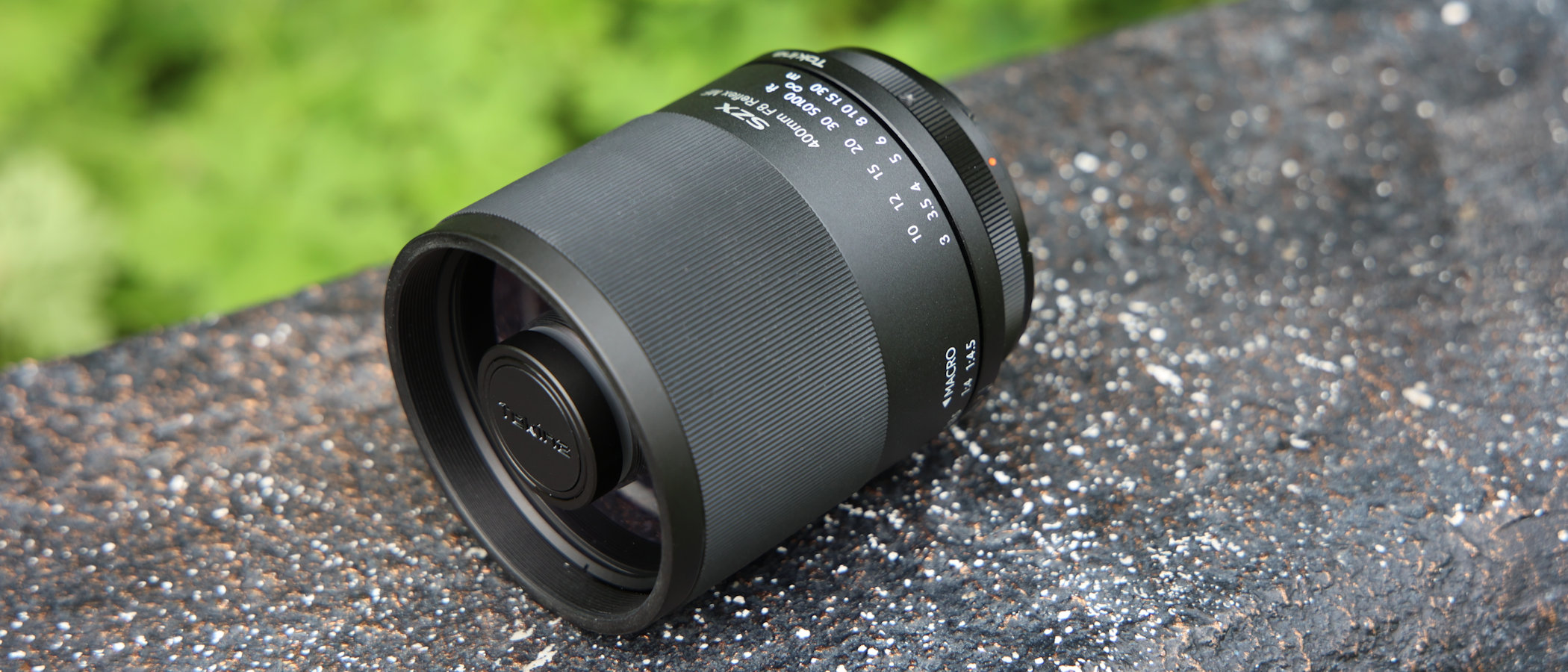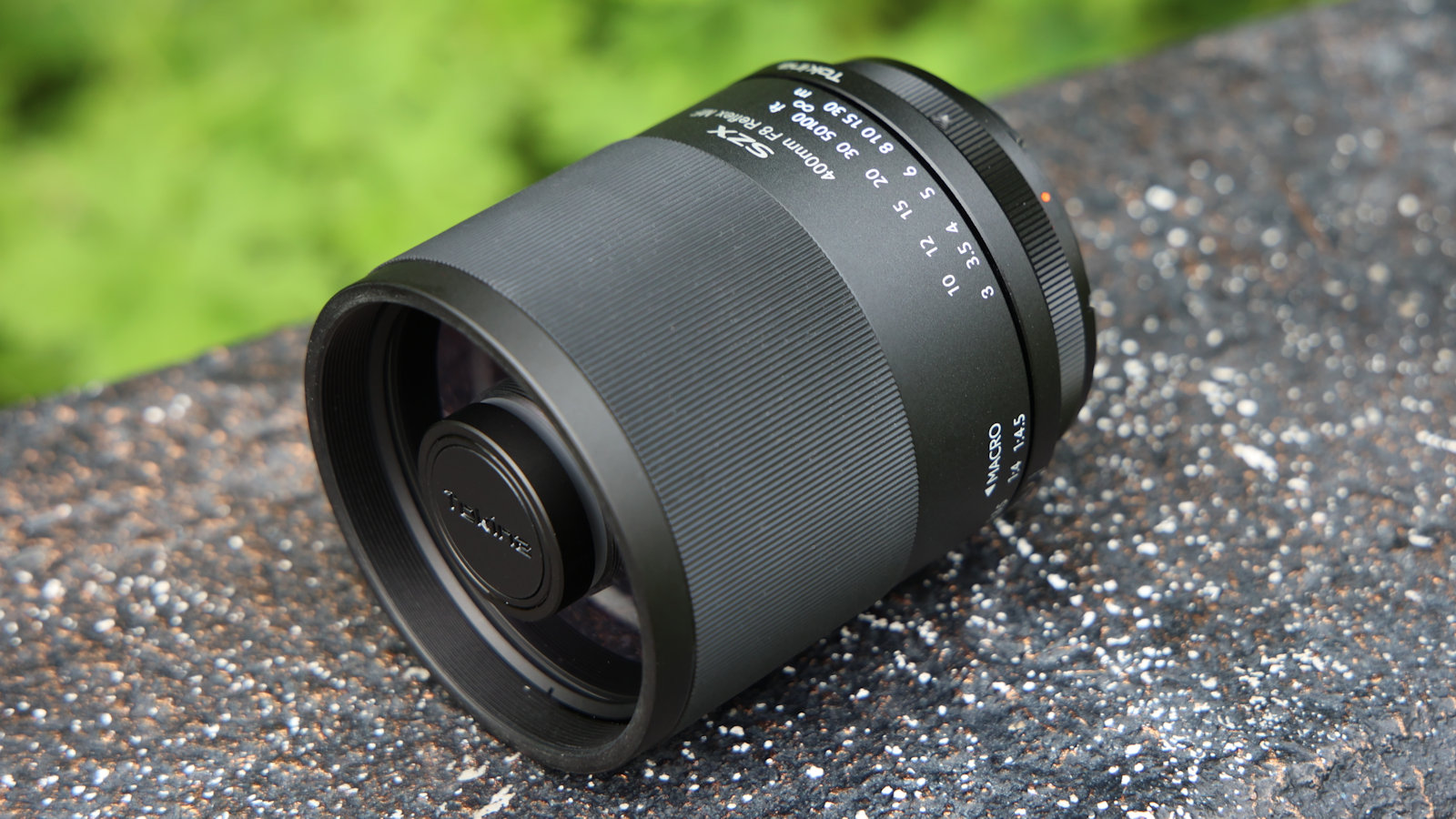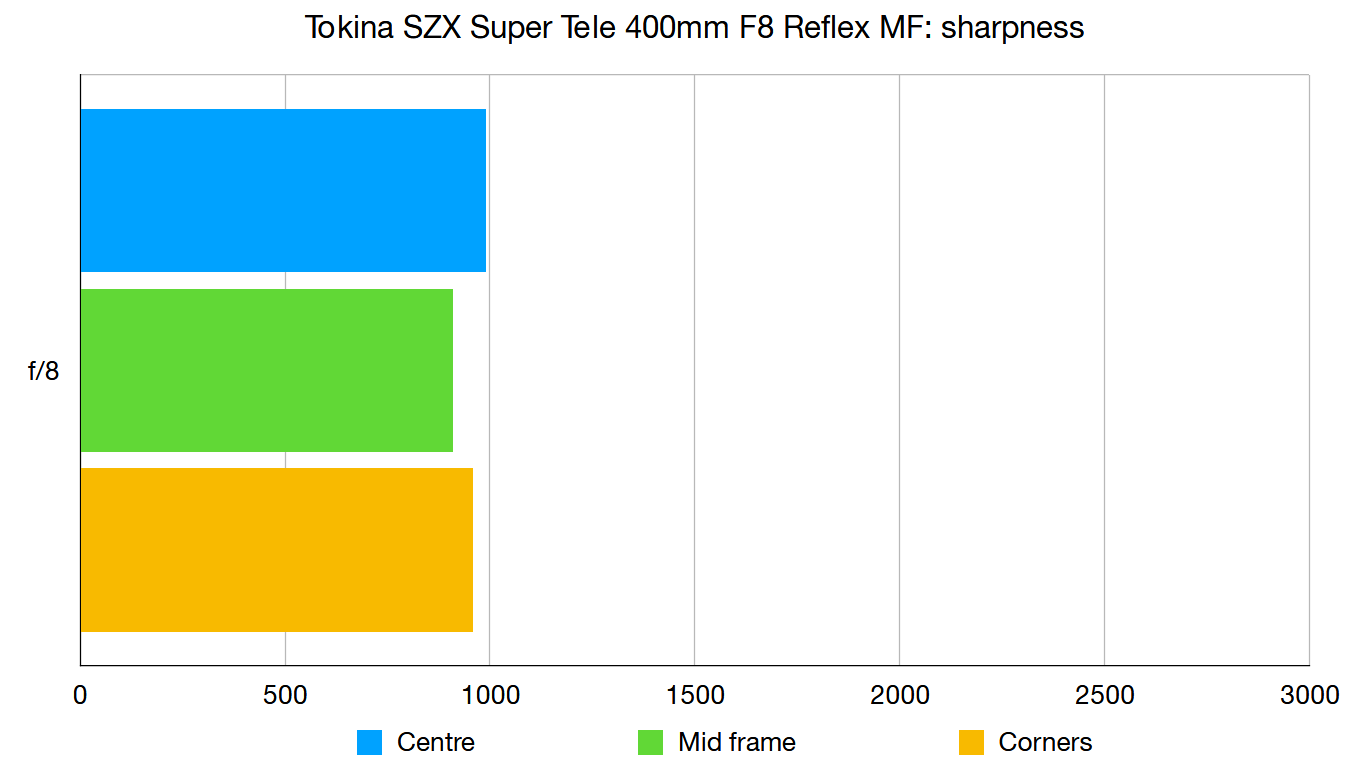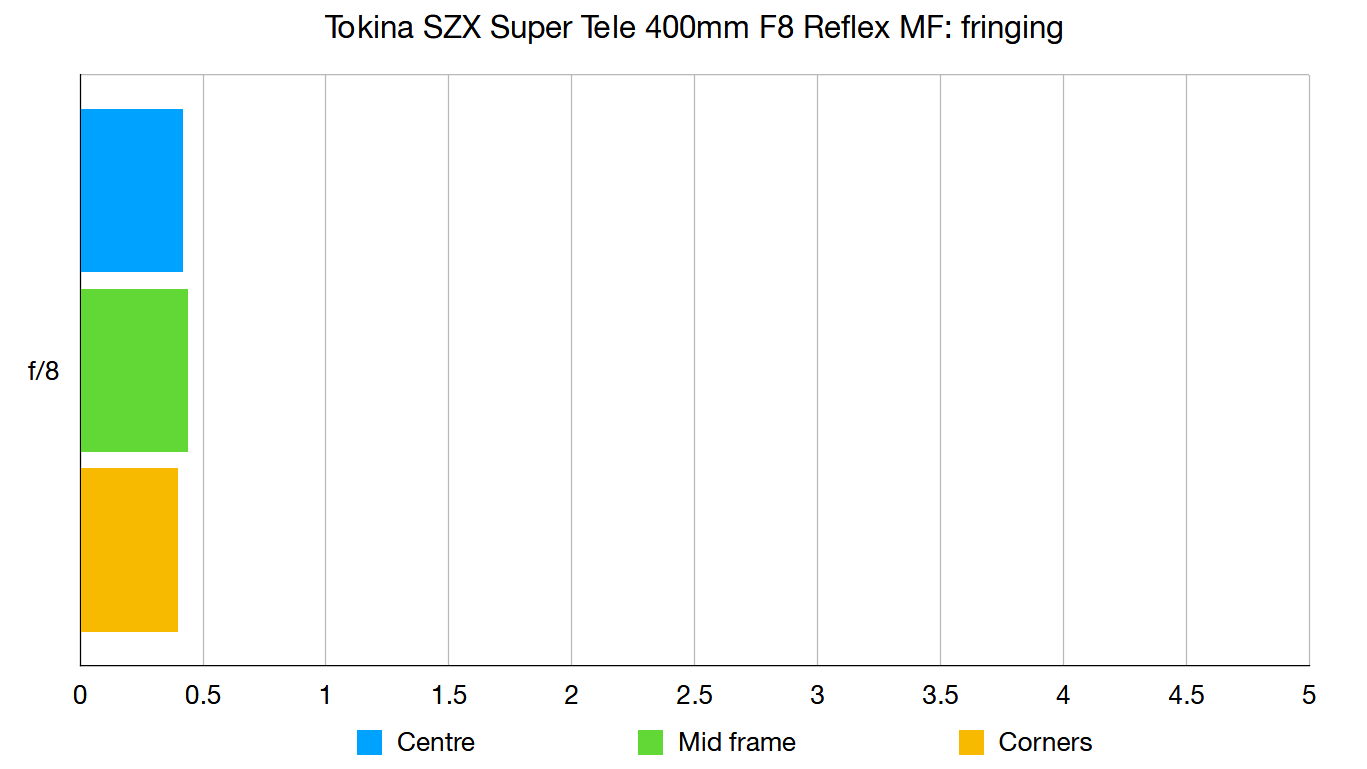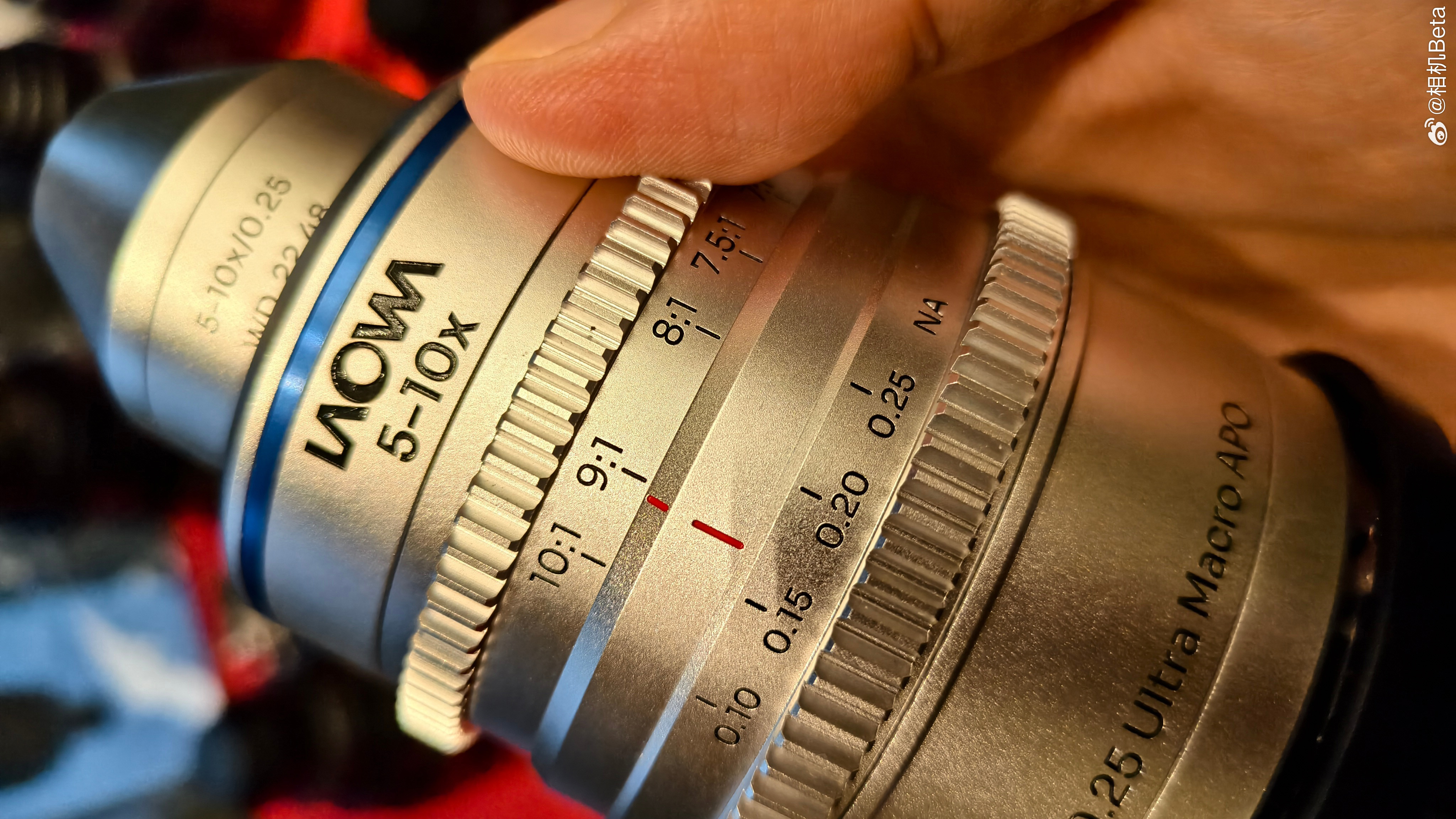Digital Camera World Verdict
Reflex or ‘mirror’ lenses have always been a poor alternative to the real deal when shooting with DSLRs. But this Tokina proves that mirrorless cameras give the breed a whole new lease of life, with a relatively bright viewfinder image and often the addition of in-body image stabilization. The lens is amazingly small and lightweight for a full-frame compatible super-tele lens, and remarkably inexpensive to buy. Sharpness isn’t magnificent but overall image quality is very convincing, making it a real steal at the price. It’s also available in a huge range of mount options for both full-frame and crop-sensor DSLRs and mirrorless cameras. The SZX 400mm is a fully manual lens, with manual focusing, a fixed f/8 aperture and no electronics whatsoever, but it’s also full of retro charm, makes a great travelling companion and is something a bit different.
Pros
- +
Super-small and ultra-lightweight for a super-tele zoom
- +
Inexpensive to buy
- +
Wide range of mount options
Cons
- -
Not the sharpest tool in the box
- -
Fixed aperture, by necessity
- -
Accurate focusing can be a bit tricky
Why you can trust Digital Camera World
Think super-tele primes and you’re probably thinking of huge lenses that weigh you down and cost a fortune. For example, the Sigma 500mm F4 DG OS HSM Sports is a whopping 145x380mm in size, weighs in at a hefty 3,310g and costs around £4,699/$5,999 (although it’s massively less expensive than own-brand competitors from the likes of Canon and Nikon).
Even Canon’s ‘lightweight’ and retractable fixed-aperture RF 600mm F11 IS STM is 93x200mm, stretching to 270mm long when it’s in use, and weighs 930g. Tokina’s new 400mm reflex lens is comparatively tiny, at just 74x77mm and a real featherweight at a mere 355g. And it’s a real budget buy at around £249/$224. It’s also available in many mount options, so there’s something for almost everyone.
Specifications
Mount: Canon EF, Canon RF, Fujifilm X, Nikon F, Nikon Z, Sony E, MFT, T-mount
Full frame: Yes
Image stabilization: No
Autofocus: No
Lens construction: 6 elements in 5 groups
Angle of view: 6.1 degrees
Diaphragm blades: None
Minimum aperture: f/8 (fixed)
Minimum focusing distance: 1.15m
Maximum magnification ratio: 0.4x
Filter size: 67mm
Dimensions: 74x77mm
Weight: 355g
Key features
The standout feature behind the diminutive design of this Tokina super-tele is that it’s a reflex or ‘mirror’ lens. As such, three of its six optical elements have mirrored surfaces that bounce the light backwards and forwards within the relatively short barrel. This enables a long focal length in a physically small build. The silvered coatings have a protective antioxidant coating to prevent deterioration over time.
Harking back to Tokina’s popular 35mm film lenses of the 1980s, the new lens inherits an SZX prefix, the letters of which stand for Satisfaction, Zest eXcitement. It’s certainly satisfying to find a lens that’s available in so many mount options, including Canon EF, Canon RF, Fujifilm X, Nikon F, Nikon Z, Sony E, MFT and T-mount. In fact, it’s exactly the same lens in each case, just with a different adapter fixed onto the rear to suit the relevant type of camera.
There are absolutely no electronics in the lens. As with other mirror lenses, the aperture is fixed, in this case at f/8, and focusing is a purely manual affair.
Naturally, the lack of autofocus can be a frustration when you’re trying to track moving subjects in wildlife, sport and action photography. On the plus side, manual focusing works well with mirrorless cameras that offer a focus peaking aid. For mirrorless cameras that feature in-body stabilization, you can also often take advantage of this by setting the correct focal length of 400mm in the relevant menu. As there’s no electronic link between the lens and body, you might also need to apply a custom setting to release the shutter with ‘no lens attached’.
The best camera deals, reviews, product advice, and unmissable photography news, direct to your inbox!
Build and handling
Although lightweight and inexpensive to buy, the Tokina feels well-made and smartly finished. Typical of manual-focus lenses, it has silky-smooth, long-throw focus ring, which usually allows for very fine adjustments. However, nearly half of the travel is taken up by a ‘macro’ section which enables very close focusing for a 400mm super-tele lens, right down to 1.15m. This delivers a sizeable 0.4x magnification ratio, which is effectively further boosted when using the lens on a crop-sensor camera body. The same goes for the effective focal length, which is typically boosted to around 600mm on APS-C format cameras and to 800mm on Micro Four Thirds cameras.
Ultimately, precise focusing can be a little tricky, requiring very small amounts of rotation and a steady hand. Even so, after using the lens for a while, you’ll probably find that you develop the knack for speedy and accurate focusing.
The Tokina comes complete with a high-quality metal hood, although it’s of the screw-in variety rather than bayonet-fit, and can’t be reversed for secure storage clipped onto the lens.
Performance
A problem with using narrow-aperture lenses on even the best DSLRs is that you inevitably get quite a dark viewfinder image. The lens comes into its own on mirrorless cameras, where the electronic viewfinder gives you a brighter image, reflecting the effect of the exposure setting. Another issue is that you might need a fairly high ISO setting to enable a sufficiently fast shutter speed to avoid camera-shake or to freeze motion. Again, the latest cameras generally deliver good picture quality with a fairly small amount of image noise, even at high ISO settings, again reinforcing the Tokina’s usefulness and practicality.
Outright sharpness isn’t on a par with pricey, regular telephoto zooms and primes but it’s impressive for a mirror lens. Another plus point is that levels of sharpness are very consistent across the entire image frame, and there’s very little in the way of colour fringing and distortion.
Bokeh is generally pleasant but you’ll certainly notice the notorious ‘donut’ effect that mirror lenses produce from defocused lights and other bright points, as shown in some of our example shots. You might actually see this as a plus point, as it brings something different to the pictorial look of images.
Sample photos
Lab data
We run a range of lab tests under controlled conditions, using the Imatest Master testing suite. Photos of test charts are taken across the range of apertures and zooms (where available), then analyzed for sharpness, distortion and chromatic aberrations.
We use Imatest SFR (spatial frequency response) charts and analysis software to plot lens resolution at the centre of the image frame, corners and mid-point distances, across the range of aperture settings and, with zoom lenses, at four different focal lengths. The tests also measure distortion and color fringing (chromatic aberration).
Sharpness:
Sharpness won’t blow you away but it’s impressively consistent across the whole image frame, from the centre to the extreme corners. Ultimately levels of centre sharpness are on a par with what most lenses deliver towards the edges of the frame.
Fringing:
Colour fringing remains very negligible across the whole image frame, right into the extreme edges and corners, and that’s without any in-camera correction.
Distortion: 0.69
As with color fringing, distortion is extremely minimal, with just the merest hint of pincushion.
Verdict
Reflex or mirror lenses can feel less than ideal on a DSLR but this Tokina works very well on mirrorless cameras. Not only is the viewfinder image comparatively bright and clear, but the compact size and light weight of the lens make it feel right at home on relatively small camera bodies. It’s not hugely sharp, as revealed in our lab-tests, but the Tokina delivers levels of sharpness in real-world shooting that most will find entirely acceptable. Overall, it’s a refreshingly small and ultra-lightweight super-tele that’s more than worth the very affordable asking price.
• In the UK? Buy the Tokina SZX Super Tele 400mm F8 Reflex MF at Wex
Read more:
The best Canon telephoto lenses
The best Nikon telephoto lenses
The best lenses for bird photography and wildlife
The best 150-600mm lenses
The best tripods
The best monopods
Matthew Richards is a photographer and journalist who has spent years using and reviewing all manner of photo gear. He is Digital Camera World's principal lens reviewer – and has tested more primes and zooms than most people have had hot dinners!
His expertise with equipment doesn’t end there, though. He is also an encyclopedia when it comes to all manner of cameras, camera holsters and bags, flashguns, tripods and heads, printers, papers and inks, and just about anything imaging-related.
In an earlier life he was a broadcast engineer at the BBC, as well as a former editor of PC Guide.
